Ein Wintermärchen. Der Winter in der Kunst von der Renaissance bis zum …
10.02.2012 – 29.04.2012
Location Pfister-Bau (Grosser Ausstellungssaal, ehem. Bührlesaal).
Location Pfister-Bau (Grosser Ausstellungssaal, ehem. Bührlesaal).
When the Niagara Falls Freeze Over: Art Loves Winter
Full title
Ein Wintermärchen. Der Winter in der Kunst von der Renaissance bis zum ImpressionismusFrom the point of view of continental Europe, winter is the season which once brought much joy but also suffering and sacrifices. From our present perspective, with our comfortable underfloor heating, this might be hard to understand. But, especially in the ‘Little Ice Age’ from the end of the 16th century to the last third of the 17th century, it was cooler in all parts of the world than it is today. In the Bible, winter was already viewed as a plague that, after the Fall of Man, came over the previously so innocent and unclothed Adam and Eve. Winter therefore contains things that are religious, mythical, symbolic and normal as well as beautiful and terrible – a wonderful starting point for an entertaining and instructive thematic exhibition about snow and ice, need and misery, but also joys for the palate and high spirits.
More than any others, the people of the Netherlands in the Golden Age dominated the genre of winter pictures and our collective imagination of wintry conditions. Highlights of the exhibition were doubtless ‘The Drunkard is Led Home by His Wife’ (1616) by Pieter Bruegel the Younger and Portrait of Hélèna Fourment in a Fur Coat (1636–38) by Peter Paul Rubens, not least because Brueghel and Rubens both created (wintry) desires for the theme. Winter was also repeatedly a background, ally or opponent in war, as in Jacques-Louis Davids picture from the year 1801: It shows Napoleon’s crossing of the Great St. Bernhard with his entire artillery. Joseph-Ferdinand Boissard’s painting of 1835 in turn thematized the misery of the retreat from Russia by the French army, which was not prepared for a winter war. Hippolyte Sebron alternatively showed with a painting of the frozen masses of water in 1857 that the Niagara Falls were really stilled by winter.
The show was conceived by Ronald de Leeuw, for many years the Director of the Rijksmuseum in Amsterdam, in collaboration with the Art History Museum of Vienna, where the exhibition also started. On view in Zurich were 130 works from the Renaissance to Impressionism, including paintings, tapestries, art sculptures and applied arts up to spectacularly carved Baroque sleds. The exhibition and the rich catalogue book (‘Wintermärchen. Winter-Darstellungen in der europäischen Kunst von Bruegel bis Beuys’, published by Dumont) were well received by the public: ‘A tour full of experiences’ said Konrad Tobler (Tages-Anzeiger) in praise, although he also regretted that the continuation into the present had been sadly omitted in Zurich for reasons of space.
[Peter Stohler]
Winter therefore contains things that are religious, mythical, symbolic and normal as well as beautiful and terrible – a wonderful starting point for an entertaining and instructive thematic exhibition about snow and ice, need and misery, but also joys for the palate and high spirits.
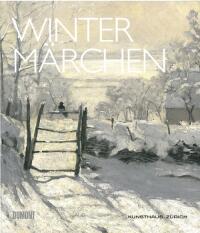
1/10
exhibition catalog
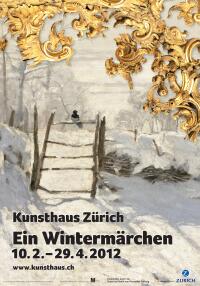
2/10
exhibition poster
Design: Gestalten AG, Zürich / Image: Claude Monet
Design: Gestalten AG, Zürich / Image: Claude Monet
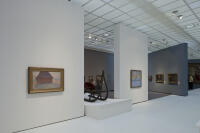
3/10
exhibition view
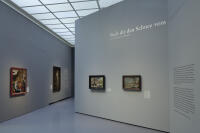
4/10
exhibition view
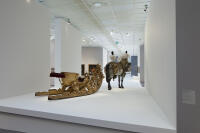
5/10
exhibition view

6/10
exhibition view
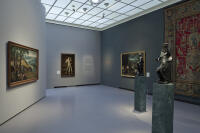
7/10
exhibition view

8/10
exhibition view
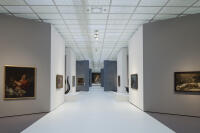
9/10
exhibition view
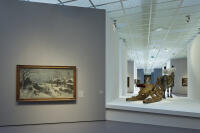
10/10
exhibition view
1/10